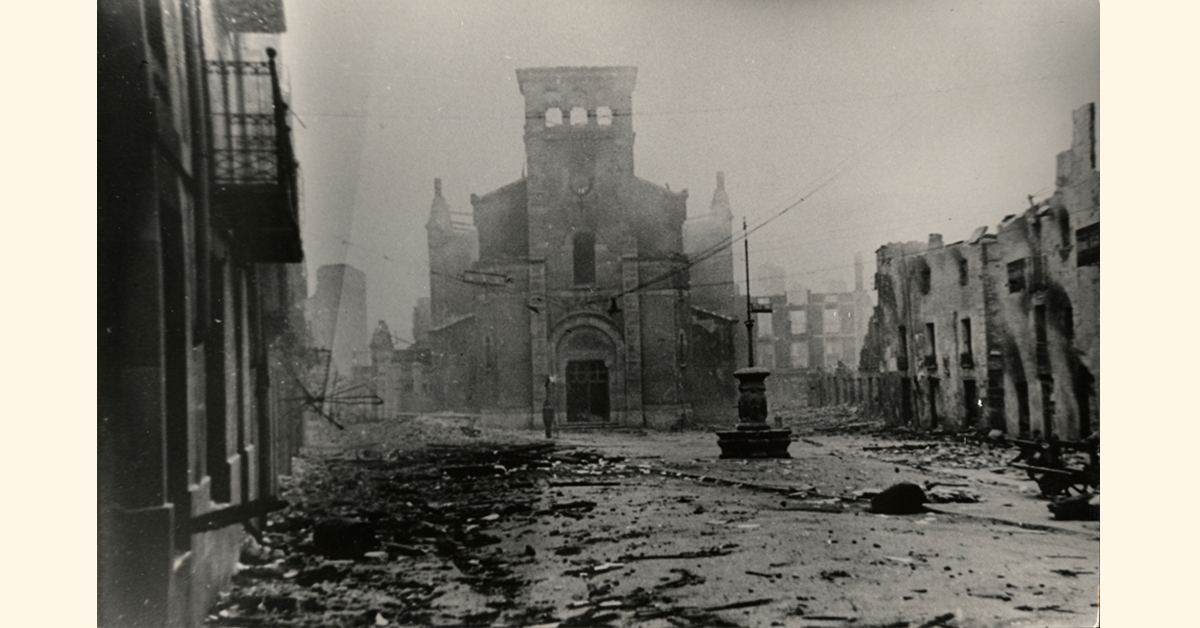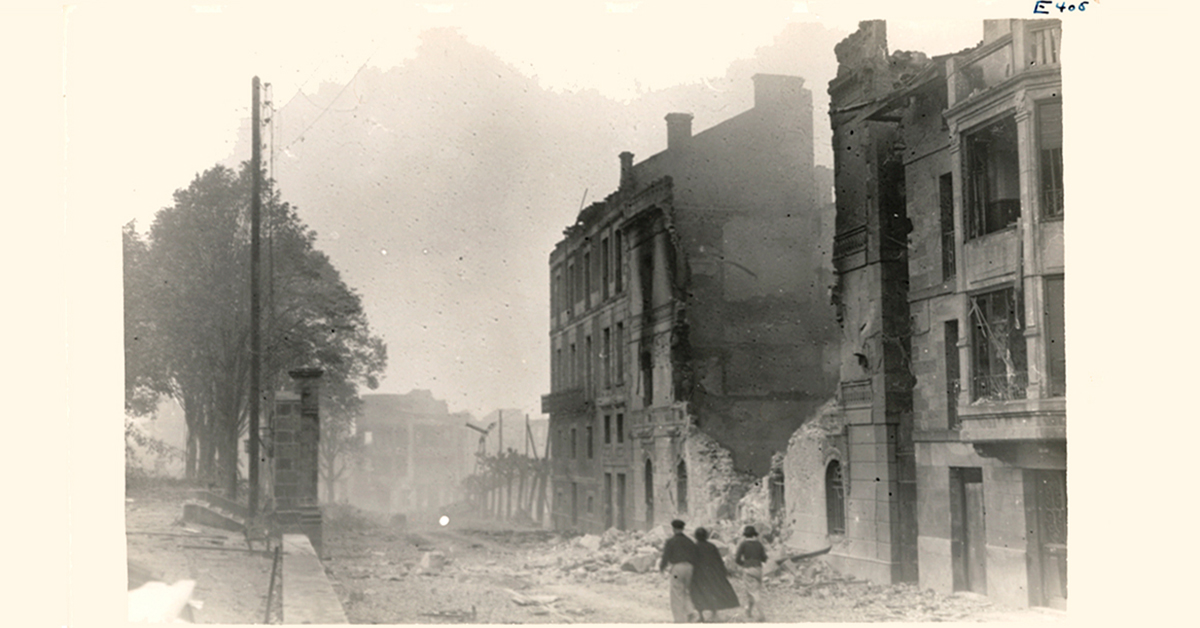Basque ethnography at a glance

St John’s church, nowadays disappeared. Bombing of Gernika Documentation Center. Gernika Peace Museum Foundation.
The previous post described the two first stages of the attack, which ended with the following two phases and their consequences.
3. Forty minutes later, three K/88 squadrons with a total of 21 Junkers Ju52 heavy bombers attacked from the north and were not seen by the people keeping watch until it was too late.
The first bombs to be dropped were blockbusters, which weighed between 50 and 250 kilograms, and were fitted with time fuses. The bombs shattered the roofs, penetrated the buildings and detonated at ground level several seconds later. In the case of the 250 Kg bombs, that demolished the buildings, only the inner timber structures of the buildings were left.
The following barrage of bombers then dropped 1 kg incendiary bombs. When the components of those bombs came into contact with other metals, the reaction caused an uncontrollable fire and temperatures over 1500 degrees. Consequently, a huge fire broke out in Gernika, which could be seen many kilometres away.
After taking two direct hits with 250 kg bombs, the Calle Andra Mari shelter was blown up, killing most of the 450 or 500 people there and burying the others alive, who were then suffocated or burnt to death. Many witnesses referred to the shouts that could be heard for hours, while the fire spread towards the shelter.
4. Finally, any survivors who tried to escape from the town centre were machine-gunned down by fighter and strike planes for nearly two hours more. Those planes flew over in “chains” of three planes that nosedived to just a few metres over the ground. According to some witness accounts, the effect of the aerial machine-gun attacks on the bodies was devastating.
In total, between 31 and 41 tons of explosive were dropped, most as incendiary bombs that complete razed the town centre. It took several days to put out the fire. The outcome: 85.22% of buildings were destroyed and 99% of the charter town affected. The “strategic targets” of the armament factory and the Renteria bridge were not bombed. As regards the number of victims, the Government of the Basque Country recorded 1654 deaths. The Mayor, José Labauria, and other witnesses, along with international reporters, said that over a thousand people had lost their lives during the air raid. Most of them could not be recorded as the Basque Government authorities did not have enough time to recover many of the victims trapped in the ruins. Investigation is still underway in order to quantify and identify the victims. The fact that over 60,000 m3 of rumble were not removed until the end of 1941, that Franco’s regime would strive to erase the records prepared by the Basque authorities and, later on, the possible destruction and concealment of documents have hindered the likelihood of establishing that figure, which has been and continues to be so controversial.
The day following the bombing, the commanders of the three regimes of the rebel coalition – Spanish, German and Italian – called on the Basque Government and the Basque troops to surrender. And they threatened to bomb Bilbao in a similar way.

Asilo Calzada Street, nowadays Juan Calzada. Bombing of Gernika Documentation Center. Gernika Peace Museum Foundation.
Given the impact of the bombing internationally on the front covers and in articles of the leading papers of Europe and America, the Franco and German commanders denied that Gernika had been bombed. Special mention should be made of the journalist George L. Steer and the priest Alberto de Onaindia, an eyewitness, who were among the first to break the news to the world. At the same time, members of the Condor Legion examined in situ the Gernika ruins, studying the effects of the bombing, destroyed evidence and took photos in the greatest secrecy, and under orders to deny the truth of what had happened. The Spanish government took the line that the Basques themselves had burnt the town until Franco’s death in 1975.
Gernika was a test-run for the Luftwaffe. As Richthofen would point out in his diary when he considered the attack on the charter town as a “technical success”.
Ana Teresa Núñez Monasterio
Bombing of Gernika Documentation Center

